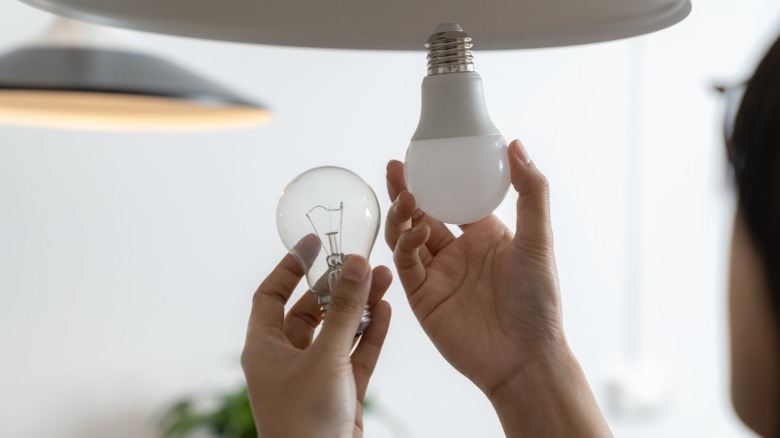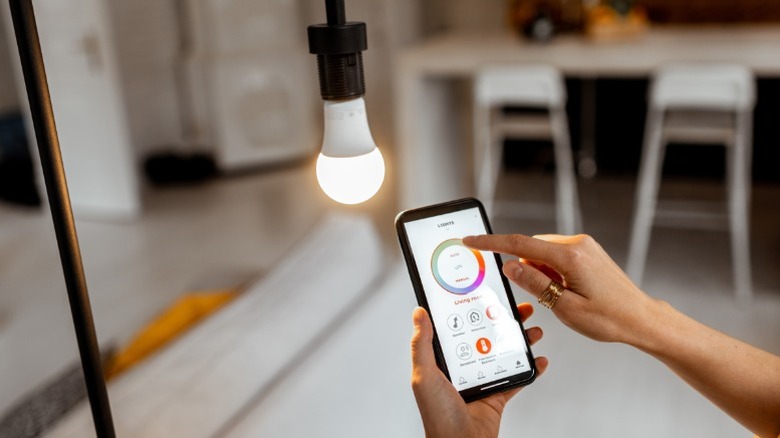How Long Do Smart Light Bulbs Last? (And How Can You Maximize Their Lifespan?)
LED light bulbs are some of the easiest smart home gadgets to set up, requiring you to simply screw in the bulb and install an app on your phone. Incorporating smart lighting in your house is a quick and easy solution if you dread controlling the lights using switches. Most smart light bulbs come with an app of their own and feature integration with assistant services like Google Home, Alexa, and Siri — allowing you to control them using voice commands.
Smart LED lights come in different wattages, temperature options, and form factors. Compared to traditional incandescent bulbs that first convert electricity into heat and then into light, an LED, or a Light Emitting Diode bulb converts electricity directly into light. The result? Considerable savings on your electricity bill, but also a light source that lasts a very long time.
According to the U.S. Department of Energy, an LED light bulb can last up to 30 times longer than an incandescent bulb. The exact lifetime of a smart light will vary on various factors, but the general consensus among leading manufacturers is 20,000 to 50,000 hours of use. Let's get into a bit more depth about the life expectancy claims from major smart lighting brands, and the best practices to ensure your smart lights don't burn out prematurely.
Turns out LED lights last a really long time
An incandescent light bulb is rated to last around 1,000 hours, since the filament eventually burns out. An LED light, however, can last up to 50,000 hours. This figure is more often than not the best-case scenario, meaning commercially available smart lights may last a comparatively shorter period.
The Philips Hue series is one of the most popular options when shopping for smart lights, and its diversified product portfolio means you can rely on a single app to control various kinds of lights in your home. Philips claims that its newer-generation LED bulbs can last up to 25,000 hours. TP-Link is another big player in the smart home market and offers everything from light bulbs to Wi-Fi routers. TP-Link's smart light bulbs are rated for a similar 15,000 to 25,000 hours of use, depending on the model.
The popular LIFX Color smart bulb is designed to last up to 22.8 years, according to the company. Govee, which is a newer contender in this space of smart lighting, sticks to the industry-standard of 20,000 to 50,000 hours of life span for an LED light. Lighting brands thus get fancy numbers of 25 year-life spans on their light bulbs, with a conservative average of 3 hours of illumination per day. Even with real-world frequent and longer usage, you can expect to swap not more than a couple of smart bulbs in your lifetime.
Get the most out of your smart lights
Compared to incandescent bulbs that rely on heat, smart lights last much longer. Despite this, LED lights still generate a tiny bit of heat, which needs to be dissipated with proper ventilation. If you notice your smart light being frequently hot to touch, consider moving it to a more open fixture and to a location in your room that's well-ventilated. This is true for extremely cold conditions as well, which can reduce the lifespan of your smart light. In lamps with multiple fixtures, avoid placing an LED light next to an incandescent bulb — this would subject it to a lot of heat.
Though LED lights generally fare much better for longer hours of use at a stretch, it's best to switch them off when not in use. This also directly contributes towards savings on your electricity bill. Most smart lights that ship with a companion app come with a timer functionality and the ability to schedule on and off times. This way, you can set them up once and never worry about controlling them again.
Ensure you're supplying the right amount of power to your light bulb. A fixture designed to supply greater wattage than what your 12W bulb is capable of handling may lead to damage. Most smart bulbs also come with the ability to change brightness levels — leveraging this to not always run your lights at a 100% may help with longevity.


